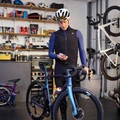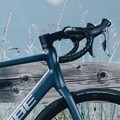
Cervelo Aspero Gravel Bike
Review
Gravel bikes have become almost synonymous with bike packing, embodying a more exploratory experience than the hard efforts of road riding and a more relaxing one than the adrenaline rush of mountain biking. It seems nobody told the folks at Cervelo this when they designed the Aspero though; the Aspero eschews these ideas and instead provides a very focused, rewarding ride. Firmly rooted in the well-established American gravel racing scene, it is very capable of providing plenty of adrenaline and speed for UK riders too, whether racing or just enjoying a different way to experience the trails.

Who is the Aspero for?
It would be easy to say that the Aspero is a gravel bike for roadies, who don’t want to sacrifice efficiency and speed just because they are going to get a bit dirty, but actually, I think it could just as easily be classed as a gravel bike for mountain bikers who want something demonstrably different to their usual off-road bike. The Aspero gives a new way to experience familiar routes for those who are already confident riding technical trails and perhaps want a bit more of a challenge. It is a bike that is made for fast gravel races, like the infamous Dirty Kanza, that make good use of the 30% of American roads that are unsurfaced.
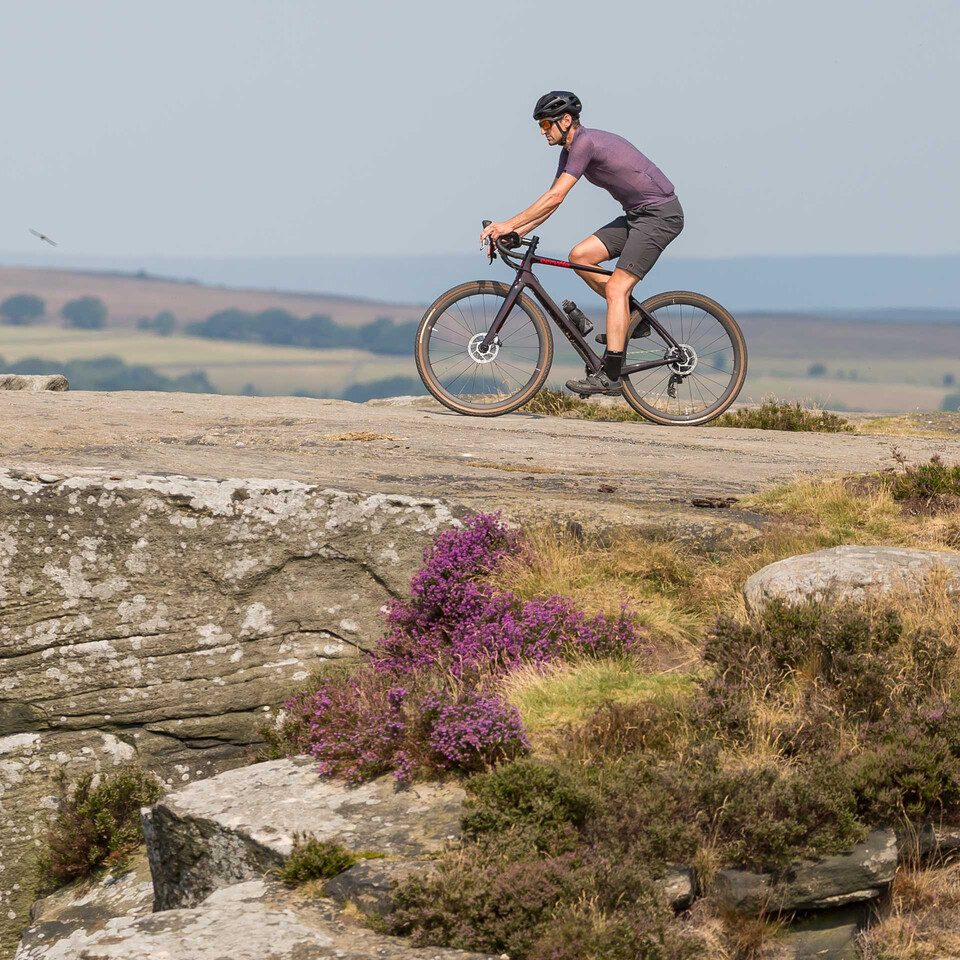
What it isn't
It is not just another gravel bike.
The Aspero does not have a plethora of mounting points for bags, bottles and the kitchen sink, nor does it have mudguard mounts so it can’t be pressed into service as a versatile UK winter bike. It does not cosset and insulate with suspension or noodly tubing intended to allow the rider to plod away day after day on epic rides across deserts or jungles and it is not a fat-tyred mountain bike with a set of drop handlebars.
It is a race bike for the dirt.

Uniquely Cervelo
The Aspero is a uniquely Cervelo take on the gravel bike genre, with it slotting easily into its race-orientated lineup. Whilst it does have two bolt holes on the top tube for securing a bento box, I think this is more likely meant for gels and hydration tablets than a camera and pack of mini pork pies. Anyway, this nod to cargo carrying is offset by the aero cut out in the seat tube for the rear wheel, à la S-Series. The Aspero is probably as close to the Caledonia as the Caledonia is to the R5, and I’d imagine that with a decent set of road wheels and tyres it would hold its own against many pure road bikes on the tarmac.

Range Overview
There are two frame options, the Aspero and Aspero-5, with the 5 using exactly the same geometry as the original, but making use of a more sophisticated carbon lay-up to drop 120 grams off the 1,110 gram frame weight without reducing stiffness or strength. Tyre clearance on both frames is officially 42mm if using 700c wheels or 49mm on 650b, so there is plenty of scope to add decent sized rubber if required.
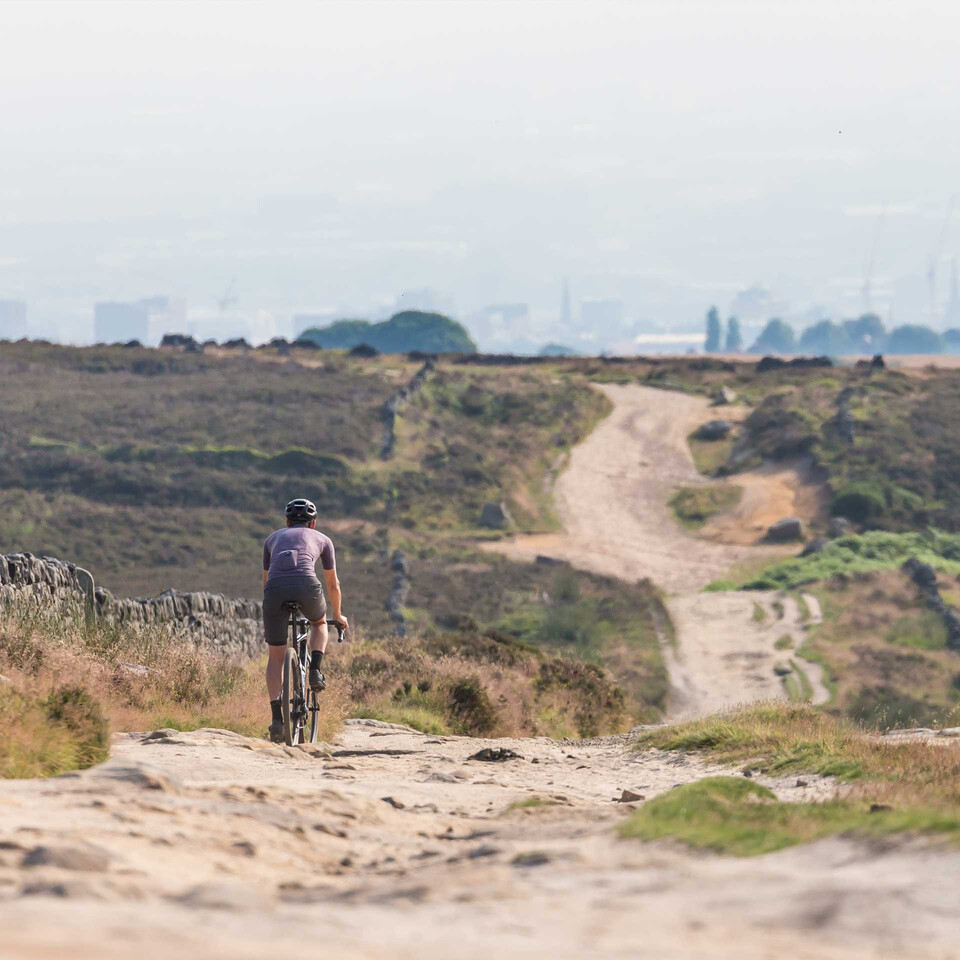
The other area where the two versions vary is the spec list, with the more expensive Aspero 5 getting a sleeker, more integrated front end that has fully internal cabling and a carbon, aero-style flared handlebar. Whilst Cervelo’s claim that this improved cockpit saves 35 grams of drag at 30mph/48kph is impressive, it's probably the fact that the lack of cabling makes using a handlebar bag easier that is of greater real-world interest. There is a pretty comprehensive offering of specifications available, ranging from SRAM Apex 1 up to SRAM RED eTap AXS, with a smattering of Shimano GRX, 650b, carbon wheels and double chainrings thrown in for good measure.
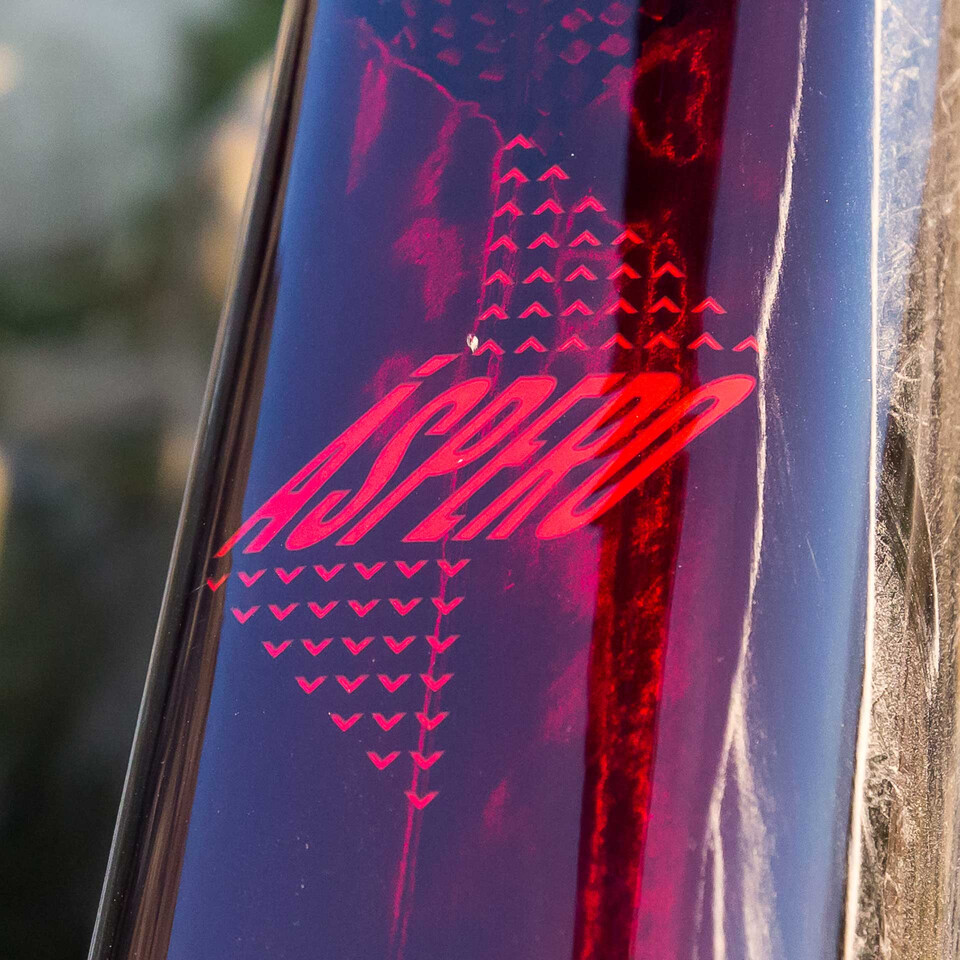
First Impressions
With wireless SRAM Force eTap and carbon 700c wheels, the bike I have been enjoying sits at the top of the standard Aspero line-up and first impressions were extremely favourable; the lustrous maroon coloured red/carbon paint job offered a beautifully deep shine, the 32mm deep wheels looked great and the bike’s weight on my scales was a very pleasing 8.4kg, putting it firmly in the road bike ballpark.

Testing Time
The Peak District is well known for its tough mountain biking, technical climbs and exciting descents, but with a bit of careful planning and some imagination it can also offer some easier gravel-style riding too. My first ride was a 37 mile/60km loop that involved a lot of reasonably flat and fairly smooth disused railway lines with a few sections of rocky limestone trails and some steep road climbs as well. This was pretty much perfect territory for a gravel bike; nothing too tricky to negotiate and so it was easy to keep the bike moving along at a good pace whilst the AXS shifters flicked the chain across the sprockets effortlessly when required to maintain cadence.

Next, I took the bike a bit out of its comfort zone, onto the mountain bike routes and rocky gritstone edges of the Peak. I switched the 38mm tyres for 43mm Panaracer GravelKing SK Plus TLC Folding Tyres, which as well as adding some volume also further improved the aesthetics thanks to their tan sidewalls. This shorter but tougher and more technical route unearthed one of the bike’s other character traits - it was great fun for a few hours of fast, focused riding, tackling descents and trails beyond its pay grade at high speed, but whilst the larger tyres helped a lot, it was still a demanding ride and concentration was required at all times.
These comments aren't meant as a criticism, I loved how it rode, but it is definitely a bike that demands to be kept moving, encouraging 100% effort throughout the ride and rewarding it with speed and efficiency, making it feel far closer to a road machine than many gravel bikes.
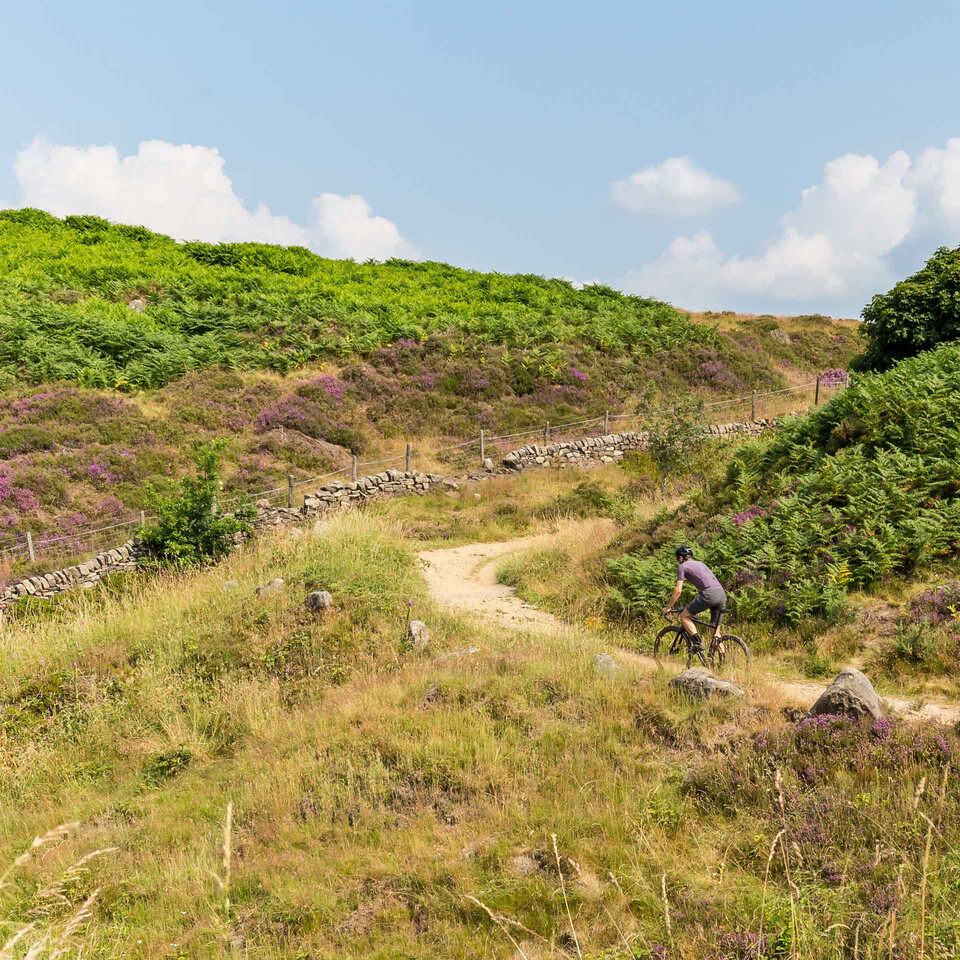
SRAM Force eTap AXS
I absolutely love the simplicity of SRAM's wireless eTap AXS system, and it seems a great fit for an off-road bike; one big paddle to shift up, another big paddle on the other side to shift down. No chance of a misshift even when wearing full-finger gloves or bouncing along rough trails, and the gears reacted first time, every time when called upon to change ratios. There is an app available to customise some of the functions, the system connected to my Wahoo ELEMNT BOLT GPS Cycling Computer for gearing and battery information and the lack of any cabling is fantastic.

However, the tougher route also exposed a bit of a weakness in the gearing on this particular model - the limitations of the road-biased Force AXS rear derailleur fitted meant that 36:36 was my lowest gear, which felt pretty sporting on some climbs. Whilst the efficiency and lightness of the bike are probably worth a sprocket or two, another few ratios would definitely have been welcome and might have been a necessity on a longer ride. Fortunately, there are other options in the Aspero range that do offer lower gearing, like the new SRAM XLPR AXS gravel-specific groupset.
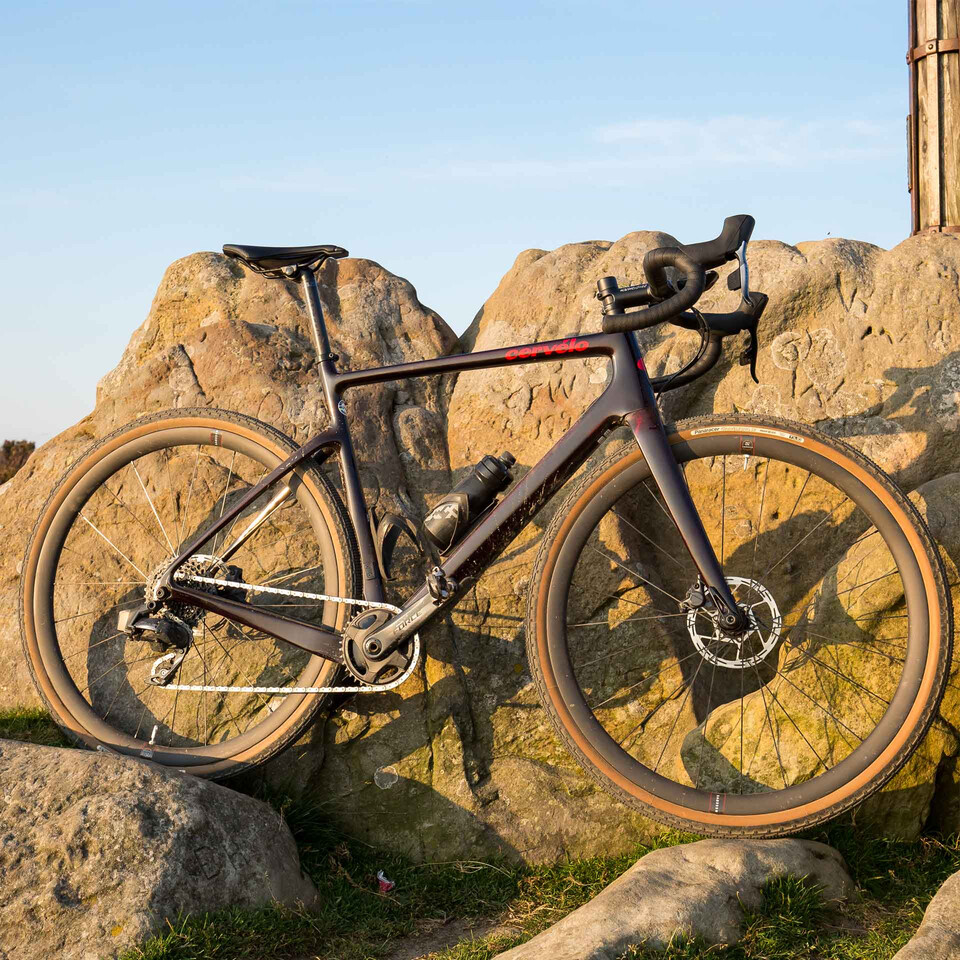
Geometry
I left the front axle in the longer, more stable setting on the fork’s Trail Mixer flip-chip, and handling was sure-footed off-road without becoming tedious on the tarmac, helped by the seat tube cut out which tucks the rear wheel in and allows the use of shorter chainstays. The flip-chip can also be used to help accommodate 650b wheels. Cervelo has used a longer top tube and shorter stem than might be expected for each frame size, taking cues from mountain bike design, to place the rider’s weight centrally between the axles for more balanced handling.

Contact Points
As with many gravel bikes, I found the handlebar set up a bit confusing; whilst it felt great riding on the comfortable, flared drops with good leverage and brake control, I thought that the flare pushed the hoods a bit too close together. This meant that on steep, technical descents there was a choice to be made between a more upright, weight back position on the narrow hoods or down on the drops for better control but with my nose uncomfortably far forward. Personally, I would have traded some of that flare for greater bar width at the hoods. I don’t usually get on too well with stubby Prologo saddles, but this Prologo Dimension NDR T4.0 Saddle seemed to work well for me, although I’d be very tempted to tape over the gaping centre cut out to protect my seatpad if the bike was going out in muddy UK conditions!

Reserve Wheels
Particular mention should go to the carbon Reserve 32 wheels as they look very classy with their subtle matt black finish and come backed by a comprehensive warranty. The wheels were simple to set up tubeless, with my Panaracer GravelKings popping on easily with an Airshot tubeless inflator. The 24mm internal width supported the larger tyres very well and their racy demeanour suited the Aspero perfectly. Whilst I can’t claim their aero shape aided me much at my speeds, they were unphased by rocky and rooty descents, even when I lowered the tyre pressures to gain a bit more comfort and bottomed out the tyres occasionally.
The Aspero is a bike for rapid local loops and for long, fast races. It is more than capable of tackling some tough terrain but it won’t nurse you through it, it has to be ridden properly and won’t thank you for weighing it down with too much luggage. Instead, pare back your kit to a minimum and relish the bike’s lightweight, speed-focused efficiency and bag some PBs, KOMs or even podiums.

